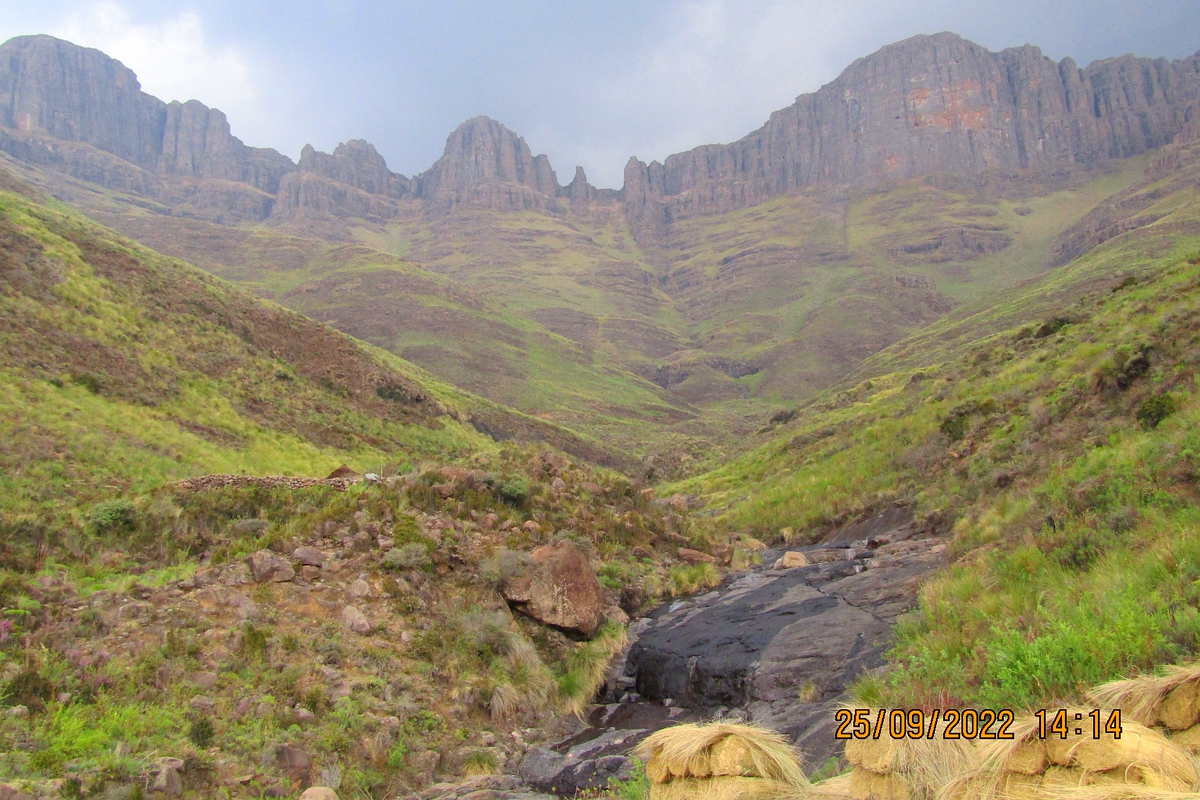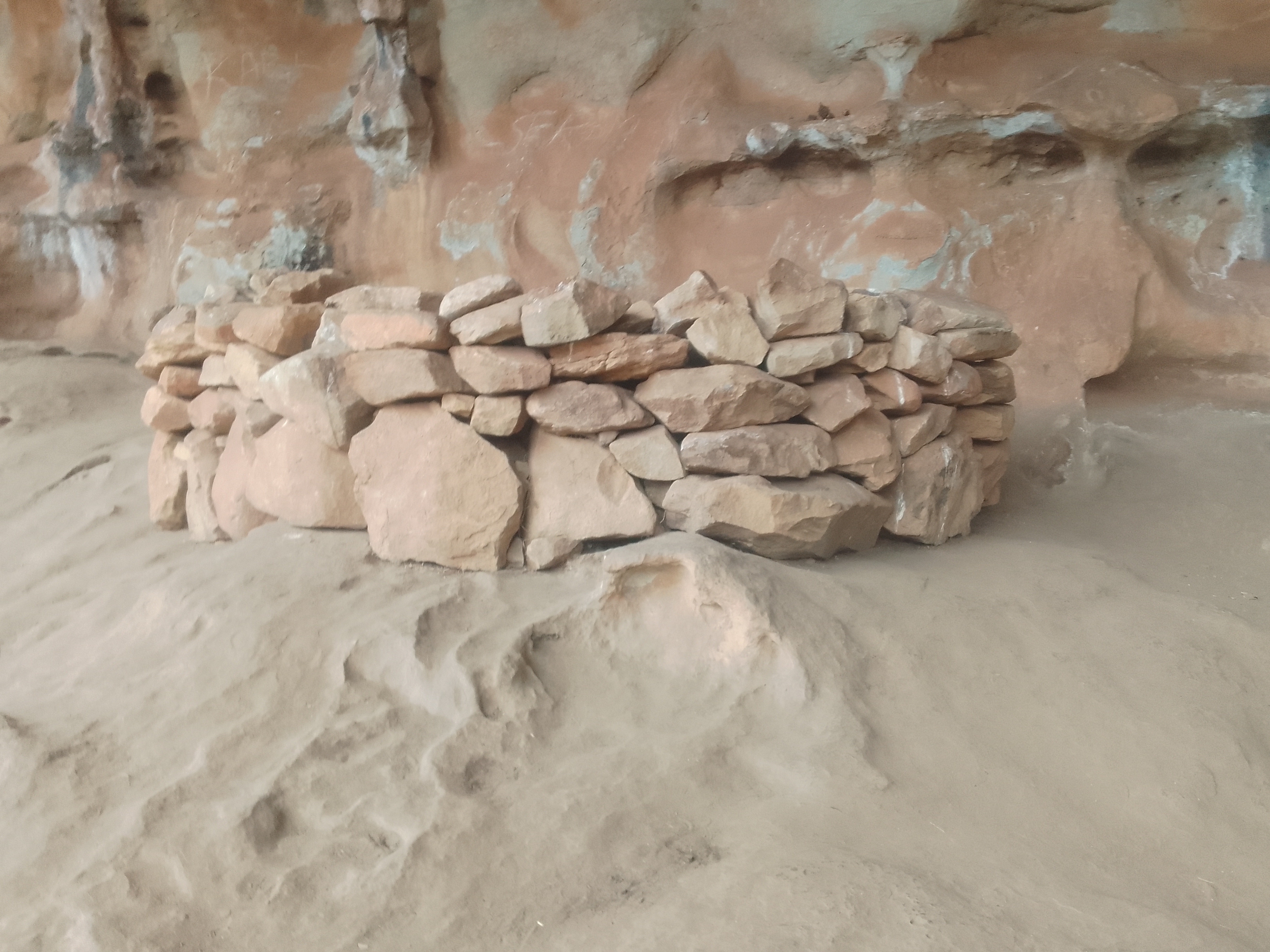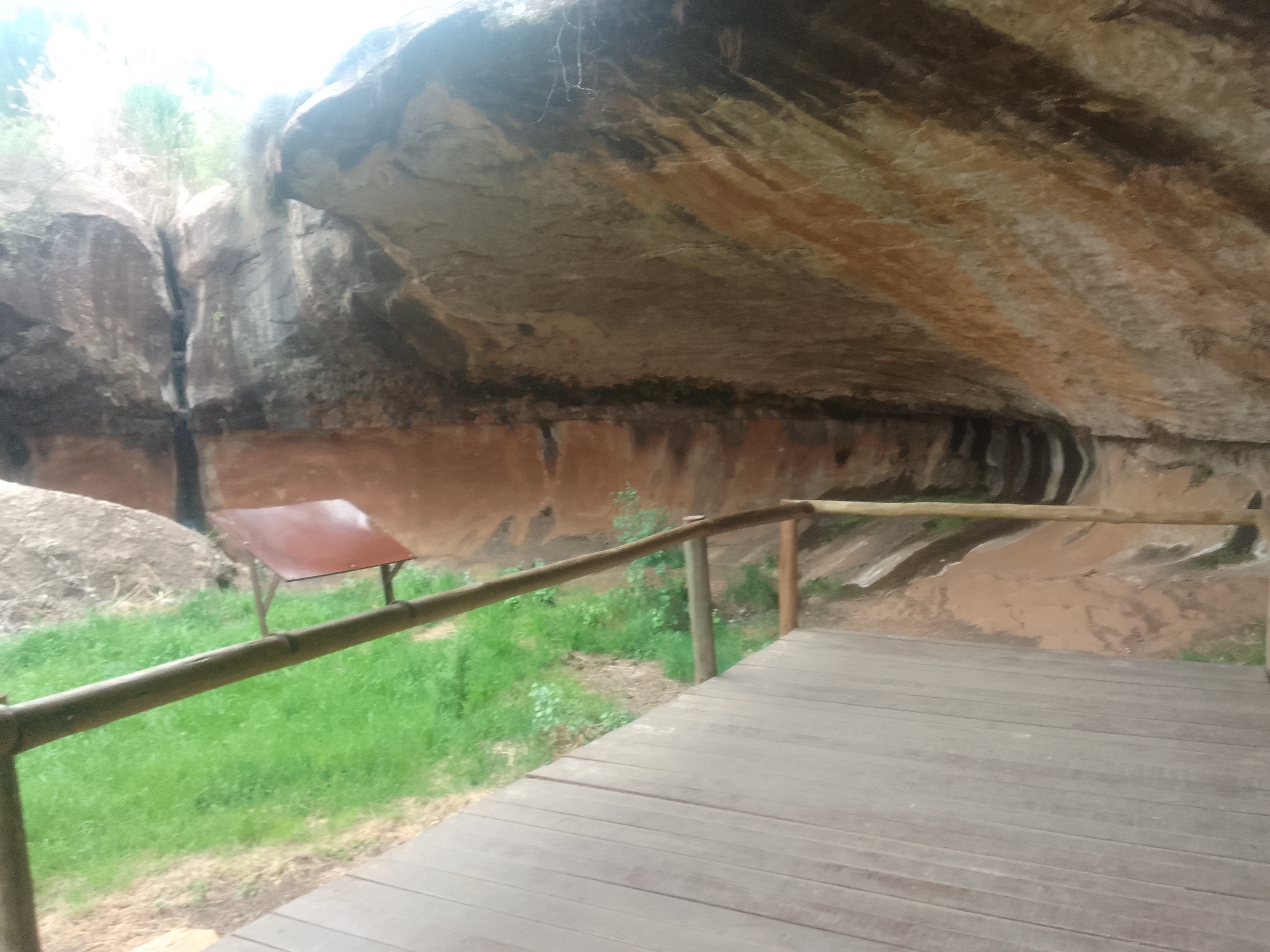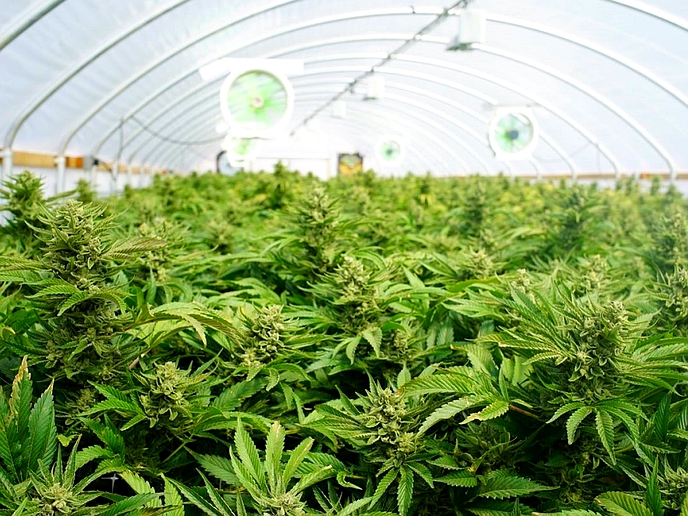There are many memorable moments in every man’s life, but a few of them get indelibly etched in our memories. One of my most memorable moments is associated with my travel to Liphoofung caves and Bokong Nature Reserve.
travel
Nov. 20, 2022
THE NOMAD - BY MAPAMELA KHANYELA
5 min read
Liphoofung, King Moshoeshoe’s Hospital

The ray of mountains at Bokong Nature Reserve
Story highlights
I first planned to visit Liphoofung Caves from Hlotse, a town in Leribe district in October 2022.
Liphoofung caves are in Butha Buthe, a district where King Moshoeshoe I used to live. The caves are 6.2km away from the famous tourist’s attraction, Afriski. The caves form part of Lesotho’s northern parks, Bokong Nature Reserve and Tšehlanyane National Park. The journey from Hlotse to Liphoofung is 60.3km.
My journey started from Major Bell Tower, a historical monument in Hlotse. After an hour journey, I arrived at Liphoofung. I was orientated about the place and told not to kill anything in the caves by Ms. ‘Mantoa Sele, a Field Ranger who has been working here for three years.
Like most travellers when going to Liphoofung, the history and the name of the place were on top of my list.
We left the reception and walk to the caves. As we walk down to the caves with Ms. Sele, she gave me a brief history of the place, that the caves are named after Elands that used to be many here. The caves were accidentally discovered by Makoanyane, King Moshoeshoe I’s warrior.
We first passed a big hole underneath a narrow bridge. “We are told Makoanyane fell into this hole with another man by the name of Mokonyane of the Nguni descendants, they came out of this place after two days, and were happy to be alive and that they discovered these caves. Until today, we do not know how deep this hole is, many instruments were used to measure it, but to no avail,” she said.
She further told me to be careful because these caves are a home to 14 different types of cobras found in Lesotho. “The snakes will not hurt you if you follow the path,” she cautioned.
From the narrow bridge, I could see a pile of stones inside the caves and that place is called church, a place that is used for prayers by visitors for different purposes. “Praying at the same place where the founder of Basotho nation used to pray has a deeper meaning for some of our visitors here. They believe their prayers will be answered. They have faith in this place as they come with good intentions,” Ms. Sele explained.
Not everything about these stones is ancient. Ms. Sele explained that the stone walls that have been here around 1845 have fallen and rebuilt by the community members to protect and maintain this as a historical place.

A special place earmarked for prayer at Liphoofung
Enjoy our daily newsletter from today
Access exclusive newsletters, along with previews of new media releases.

Liphoofung caves in Butha-Buthe
There is a visible flow of water from the walls of the cave. “Basotho and some South Africans come to wash their faces with this water, they believe that they are washing away their bad lucks. It takes hours to fill a bucket with this water because the flow is slow, however, our clients have patience, and they wait. Every week we have visitors who come specifically for this water,” Ms. Sele told me.
Liphoofung caves have two sections, the northern part of the caves which was used by the San community, while the southern part of the caves was used by King Moshoeshoe I and his people.
The caves are not only beautiful; but have played important role in the history of Lesotho. “King Moshoeshoe I also used this place to nurse his injured warriors during the wars. They would stay here until they fully recover. These caves are not visible to passerby, the warriors were therefore safe here and they could accommodate about 300 men,” explained Ms. Sele.
There is an observable rock art on the walls of the caves, a sign that the San community used to stay at Liphoofung. There are also boards giving details of each art of the animals the San community used to hunt. “Historians have told us that King Moshoeshoe I and his people arrived here 30 years after the departure of the San community as you can see this beautiful rock art,” she said as she pointed at the art.
Liphoofung caves are also a gateway to Afriski. “Tourists pass by this place on their way to Afriski, we offer them accommodation in our shales, we invite the community members around to come and cook traditional foods such as porridges and traditional beer for them,” she said.
To taste traditional foods at Liphoofung, a traveller has to make prior arrangements with the staff.
Even though Liphoofung is open for everyone to visit, some people are said to be still waiting for the approvals from their ancestors. “There are traditional doctors who tell us they are still waiting for approval from their ancestors to enter these caves. When they come, they only end at the reception because they are say they are not yet permitted to enter by their ancestors,” she concluded as the rain started falling.
My second journey was at Bokong Nature Reserve. But before heading to Bokong, I enjoyed lunch at Monakeli Agritourist farm, next to Mahlakapese River Resort.
The journey from Hlotse to Bokong is 124km, but the beauty of natural landscape makes it enjoyable. Motorists are warned to be on the low gears for their safety.
Bokong Nature Reserve is a household of beaded and cape vultures, eagles, baboons, rheboks, wetlands and of course a source of Bokong River. Bokong River joins Malibamatšo River that flows to Katse dam. A tour into this nature reserve is educative, especially when guided by a seasoned Mr. Nti Ralekhetla, who has been working as a Field Ranger for nine years in Bokong. Despite being October, there is strong cold wind in Bokong.
As we tour the nature reserve, the eagles were flying high at this place. Mr. Ralekhetla told me the interesting life of these protected birds. Pointing to the hills where he said was where eggs are layered, he said: “The nests are here in Bokong, but vulture restaurants are in Tšehlanyane, where vultures go for their meals. These vultures have become few in recent years and to increase their numbers, we take the eggs to incubations in Cape Town through the agreement of Lesotho and South African government. After hatching, these birds will be tracked to monitor their movements and they always find their way to the mountains of Lesotho,” said Ralekhetla.
No trip to Bokong is complete without the beautiful scenery of Lepaqoa water fall and how the water from this nature reserve flows to Katse dam.
A visit to Bokong and Liphoofung is often taken as a day trip, but there are many important experiences such as horse riding and bird watching.
Hours of travelling to Liphoofung and Bokong Nature Reserve, I do not regret anything. I have significantly improved in history.
Tailored for you



